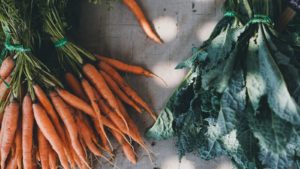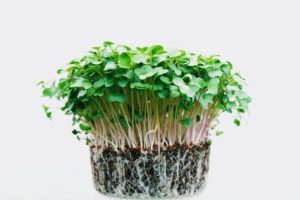Is one of your goals to eat more healthful green foods in 2019?!?
It’s the New Year. It may seem as though everyone is on a health and wellness kick. However, what can you do to keep a focus on sustainable behaviors? With consideration of eating more healthful greens, there are a few things to consider.
Accessibility & Cost for Fresh Greens
Outdoor growing opportunities will vary based on where you live. In some climates, year-round growing is normal. If not, you may be forced to stick with what the area grocery stores are transporting in from other regions.
Luckily fresh dark leafy greens tend to be priced rather fairly in grocery settings, but there is a good chance that the variety of options available will be less. Also, you may find a good price on spinach, but tomatoes or fresh herbs could be priced through the roof! Newer emphasis on commercial growing via aero- and aquaponics is opening the market up a little and, of course, local farms who have set up greenhouse growing are another great channel to consider purchasing from.
There are also various at-home options to grow your own food including indoor aeroponic systems sized for home or office environments. These can be great for fresh green herb plants as well as various leafy greens and, even vining plants, such as beans, tomatoes, or cucumbers. A few more options are featured in this article, 17 Best Climbing and Vining Vegetables for Containers You Can Grow Vertically.
Unlike a flower potter for a few small plants to grow indoors on a window sill, there is a good chance that if you take on setting up one of these options, you will find a greater commitment to keeping it up and going. You may also cut down on your grocery bill in the long run!
Would investing in and setting up indoor aeroponic growing be realistic for you in 2019?
Getting Nutrients from Eating Plant-based Foods
A variety of food sources across dietary intake as a whole has a supportive body of evidence behind it. As already touched on, the options for fresh green foods will vary and may be less for periods of time within certain regions.
Two other ways to get your greens in the new year and include variety in food sources are to include frozen or freeze-dried options. I prefer these preservation methods over dehydration due to their lesser impact on maintaining the nutrient composition closer to as if they were fresh (considering the plants were picked ripe). Another avenue is krauting which will also bring in various probiotics to your dietary intake. Many people are more clear on frozen plant-based foods and grocery stores carry them. However, freeze-dried or krauted options may not be in your current protocols.
When considering freeze-dried options, there are a few technicalities in terms of the type of freeze-dried methods. Exploring the options may be well worth your while though. Including freeze-dried plant foods, particularly those with green pigments, can definitely boost your overall nutrition intake. Freeze-dried options can come in whole form, powders, or encapsulated formulas. When looking at various capsules and formulas, a reputable company producing these options should have study data to demonstrate bioavailability.
With regards to krauted foods, the beauty is that you can purchase these or DIY. The options are seemingly endless. Variety across flavor profiles can get really creative, as this article 35 Mouthwatering Sauerkraut Recipes explores, and you can certainly kraut more than just cabbage! Krauting or freezing extra vegetables and herbs from summer months is a great habit. Check out this Homemade Sauerkraut Recipe for easy at home krauting methods.
Are you ready to explore using more frozen, freeze-dried, or krauted plant-based foods this year?
Making Eating Healthful Green Foods Habitual
Adding specificity to goals can help to set up ones that are realistic and attainable, for example, “I plan to swap out two dinners per week for a delicious green salad”. Meanwhile, objectives are specific actions or measures that support the goal to be accomplished, such as “I will pick up two more bags of dark leafy greens per week”. Think about specificity for “what, how, how many or much, frequency/how often, when”. Behavior change goals that are set up to be realistic and specific are much more likely to become habitual and normal to daily and weekly methods of operation.
Getting organized for a specific goal or objective can also help support the behaviors and reduce decision fatigue. In the case of eating more healthful greens (and any meal protocol really), I recommend people set up their kitchen space to be accommodating. This can apply to the way things are put into a refrigerator as well as having options good for transporting “brown bag” lunches. I am a big proponent of investing into a good set of glass storage containers with multiple shapes and sizes. Glass is nice because they can also be used for safer reheating of various foods. There are also techniques with paper towels or bags to help keep greens fresh and crisp. Here is a nice mini-experiment from the kitchn blog and a more comprehensive guide from FreshDirect.
Now, are you ready to set yourself up for success in eating more healthful green foods in 2019?
Ashley Arnold
Ashley runs a lifestyle health coaching service centered on evidence-based behavioral change and systematized approaches from integrative health services and healthcare. She includes functional health assessment tools that support setting more clear, realistic goals that are tailored to each client. She appreciates the products and mission of Good Fat Company due to the emphasis on whole-food, nutrition-rich products without processed additives or fillers. Also, that the product line is applicable across dietary spectrums from vegan to paleo and most anywhere in between. Further information can be found at www.ashleylarnold.com.


